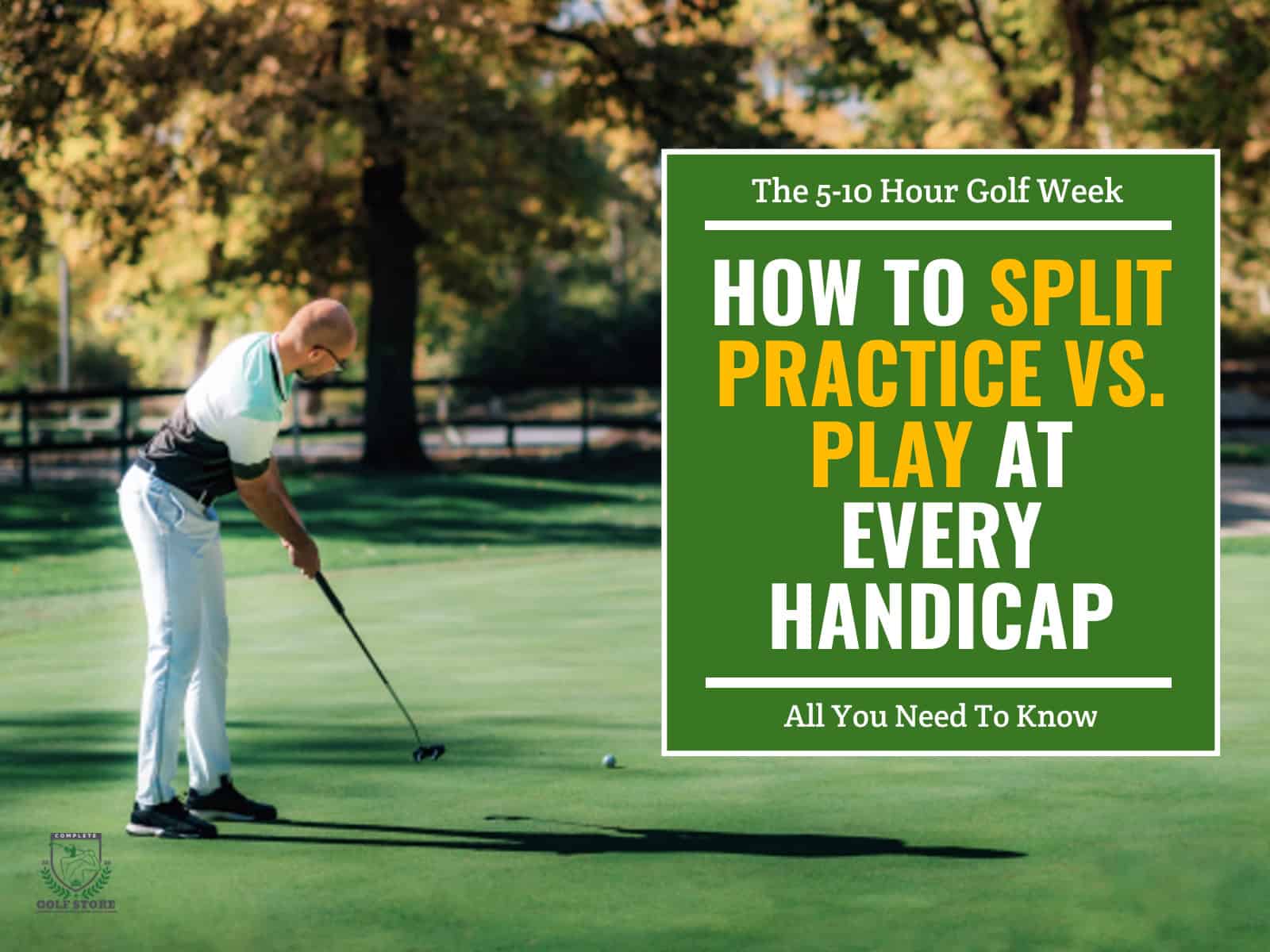Golfers are continuously looking for new methods to improve. Scoring an Eagle, which is two strokes under par, is a difficult golf challenge. However, if done successfully, you get the sensation of sheer satisfaction we all experience when things go our way and we’re hitting on all cylinders.
There’s no better feeling than knowing you did a great feat; therefore, we encourage everybody who hasn’t had an eagle to try.
This article will provide tips to help you score an eagle! So make sure you read and follow our advice to increase your chances for success!
What is Eagle in Golf?
The term “eagle” is commonly used by golfers to refer to a great scoring feat for an individual. For this reason, several golf courses have eagle plaques at the first few holes. Getting that elusive eagle, on the other hand, is no easy task.
In some circles, luck is more important than skill and talent, while in others, it’s just as crucial. In the end, there are those fortunate few who appear to be capable of doing both!

History
Golfers use the term “eagle” to refer to a score of two-under par on the golf course. During the early 20th century, the slang term “bird” was used to denote something good in the United States, leading to the coining of the term birdie.
The Atlantic City Country Club in New Jersey claims to have used the term for the first time in 1903 during a foursomes match. A plaque at the club dates this to the year 1903.
A shot that is one better than a birdie was thereafter referred to as an “eagle” after that.
Eagle was first used in the United States, but by the early 1920s, birdie and eagle were being used in the UK to denote holes that were 1-under par or 2-under par, respectively.
What is a Double Eagle?
Golfers refer to a hole with a 3-under par score on a par 5 as an albatross or double eagle.
Each golf hole on a course is given a “par” rating based on how many strokes a skilled golfer is predicted to need to complete it. A par-4 hole should take an excellent golfer four strokes to complete.
Golfers who score less than par on a hole are called “double eagles” if they do so in three strokes under par; for instance, when completing a par-5 hole in only two strokes.
Even among the world’s finest professional golfers, double eagles are extremely uncommon. Hole-in-ones (getting the ball in the hole from the tee shot) are quite common, but double eagles are far more uncommon.
Why? A long shot is typically required to make a double-eagle — such as a long iron or fairway wood in the middle of the fairway in the case of a par-4, for example.
Only 25 double eagles have been recorded on the LPGA Tour in its first 50 years.
For a regular season on the PGA Tour, there were 37 holes-in-one and only four double eagles in 2012.
How Common is an Eagle Shot In Golf?
Making an eagle in golf is a difficult feat that necessitates mastery of the game’s most precise ball maneuvering techniques. Golf drives must be blasted with utmost force by long hitters.
Sungjae Im recorded the most eagles among qualifying golfers for the TOUR Championship in 2019. A total of 18 eagles were recorded during his 2,124-hole career (0.85 percent of holes).

Martin Laird had more eagles per hole than anybody else in 2019, despite Sungjae Im’s dominance in the eagle department. In 1,440 holes, Laird had 17 eagles (1.18 percent of holes) [1].

But don’t let it get the best of you. While playing golf, eagle shots are possible. A par-5 or par-6 hole would be a good place to work on your short game. You’ll have a better chance of getting an eagle shot if you give yourself a little more “wiggle room.”
An eagle shot may take some practice, but it will have a significant impact on your game and help you win more rounds of golf.
How to Score an Eagle?
There are strategies to increase one’s chances of making an eagle, but for the average score golfer, it may seem impossible. If some of the rules of golf are still confusing for you, we recommend you read our guide to playing golf first.
It’s a common belief that if you can hit the ball further, you’ll be closer on your next stroke. The closer you get to the hole, the better your odds of a successful putt. Aside from making an eagle, it’s also important to get your putting shots in.
Recommended: How to Break 80 Consistently

Use Mother Nature to Your Advantage
Allow nature to step in and save the day. Use shifting winds, trees (or their absence), dry ground surface, altitude and elevation, and temperature fluctuations in order to hit the ball from further out.
In order to improve your game, you should select your golf driver based on your strengths and weaknesses.
Slow-swingers, i.e., novices, prefer forgiving drivers, whereas seniors choose lighter-than-normal drivers, and female golfers prefer drivers that increase swing speed.
To take advantage of the natural topography and course design, use the wavy structure of the putting greens to guide the ball toward the hole. The use of fast, hard fairways to enhance distances can also be an excellent technique.
Play a Shorter Golf Course
In order for your next shot to be successful, you must be closer to the hole. Golfers can play from a shorter, more forward tee box, which will lower the course’s total playable length.
Golf is supposed to be enjoyable, and men aren’t prohibited from using the forward tees because they’re used by the women at your golf club.
In fact, anyone, be it a beginner or expert golfer, a junior, senior, or female is free to start the game whichever way they wish – from the regular or forward tee point.
Altitude or Elevation
The lower air density (and thinner air) at higher elevations causes the golf ball to travel further, which helps achieve longer distances.
The ball experiences less drag when the air is thinner and doesn’t slow down as rapidly as it normally does. It flies farther because it’s easier to move through the air [2].
Temperature
Temperature is related to air density, too; because cold air is denser than warm air, it adds more resistance to a ball as it moves through it.
According to Trackman, a 10-degree increase in temperature results in a one-yard drop in carrying distance. Theoretically, you will lose four yards when playing in temperatures of 40 degrees compared to playing at 80 degrees [3].
Wind Direction
Increasing the number of yards per stroke is made simpler when you hit a golf ball “downwind,” which is to say, in the same direction as the wind.
Wind can also help straighten a hook or slice and help you gain more distance. That’s why paying special attention to wind direction is crucial during a golf game.
The Firmness of the Ground
A well-placed approach shot will have more success on a firm (but not hard) green. The ball should strike the surface, forward-bounce, hold and finally release.
Rollout distance is increased by 10-15 yards when the terrain is firmer. So why not make use of this unique advantage?
Trees
A golf ball’s travel down the length of a hole might be restricted by trees, but they can also give lucky bounces that help a struggling golfer. A lack of trees can indicate that the ball is more susceptible to wind.
Use the Design of the Golf Course to Your Advantage
Contrary to popular belief, golf course designers are not malicious masterminds scheming to thwart the good-natured fun of the casual golfer.
Many golf courses are designed to take advantage of natural landscape features such as hills and valleys so that golfers can take advantage of fortuitous bounces and rolls.
Golfers who want to make more eagles should take advantage of the oscillations in putting greens and the fast fairways that assist the ball roll out for extra distance.
Short Game
Short game refers to the category of golf shots executed when the player is in close proximity to or on the green.
When it comes to golf, the short game is one area where PGA Tour pros seem to have a distinct advantage. Focus on developing your short game from within 100 yards. Increase your chances of making an eagle by working on things like precision at this distance.
Frequently Asked Questions (FAQs)
You are now aware of what a golf eagle is and how it can improve your game and lead to victory. Here are some answers to frequently asked questions about what an eagle is in golf.
Who Has the Most Eagles in Golf?
It wasn’t until 1980 that eagles became a PGA Tour statistic, but when it comes to career eagles, the record goes to Justin Thomas, who has accomplished a total of 117 eagles during his entire professional career.
Carlos Franco, a member of the PGA Tour, has set the record for the most eagles made in a single season with 22. For the 2003 season, he accomplished the feat. There have only been five previous professional golfers to record 20 or more eagles in a single year.
In the 2022 PGA Tour statistics, Taylor Gooch takes the lead on par 5 eagle leaders, with Maverick McNealy as second and Patrick Rodgers coming in third [4].
Is an Eagle Better than a Birdie in Golf?
Yes, an eagle is better than a birdie in golf, but making one during the course of a round is more difficult than making a birdie. Two strokes under par for an eagle and one shot under par for a birdie.
Every time you make a birdie or an eagle, it will be a lifelong memory that you should cherish, as tens of thousands of golfers may never accomplish either feat in their lifetime.
What Is Better than an Eagle in Golf?
Two scores in golf better than an eagle are possible: Albatross & Condor.
An albatross, commonly known as a double eagle, is three strokes under par. Albatross is the score of 1 on a par 4 or 2 on a par 5, depending on the course. Because there is no method to record a negative number of strokes on a par-3 hole, an albatross cannot be scored on a par 3.
In total, only 18 Albatrosses have been registered at major championships.
The Avian theme continues in golf terms.
A condor (not the vulture) achieves a higher score than an eagle (or albatross). To make a condor, you must make four strokes under par on a hole 5 and two strokes under on a par 6. Because there aren’t enough strokes in the par to equal a condor on a par 3 or par 4, the score will never be recorded.
So far, only 5 condors have been recorded in golf history.
Final Thoughts
Golf is one of the most challenging sports to learn but also one of the most rewarding. It can take years to strike a flawless drive or putt, but there are few pleasures as fulfilling.
There’s no doubt that an eagle, even if it rarely occurs in the game of golf, is regarded as a great accomplishment. It’s a real reason to celebrate.
If you score an eagle, you should be ecstatic about your golfing prowess.
References:
- Sungjae Im, PGA Championship. PGA Tour. Retrieved from https://www.pgatour.com/players/player.39971.sungjae-im.html
- Golf Ball Aerodynamics and the Effect of Altitude. Titleist. Retrieved from https://www.titleist.com/teamtitleist/b/tourblog/posts/the-effect-of-altitude-golf-ball-aerodynamics
- Proven by Science: Do colder golf balls lose distance? And does leaving golf clubs in the cold affect their performance?. Johnson, M. Retrieved from https://www.golfdigest.com/story/proven-by-science-do-colder-golf-balls-lose-distance-and-does-leaving-golf-clubs-in-the-cold-affect-their-performance
- PAR 5 EAGLE LEADERS. PGA Tour. Retrieved from https://www.pgatour.com/stats/stat.448.html





